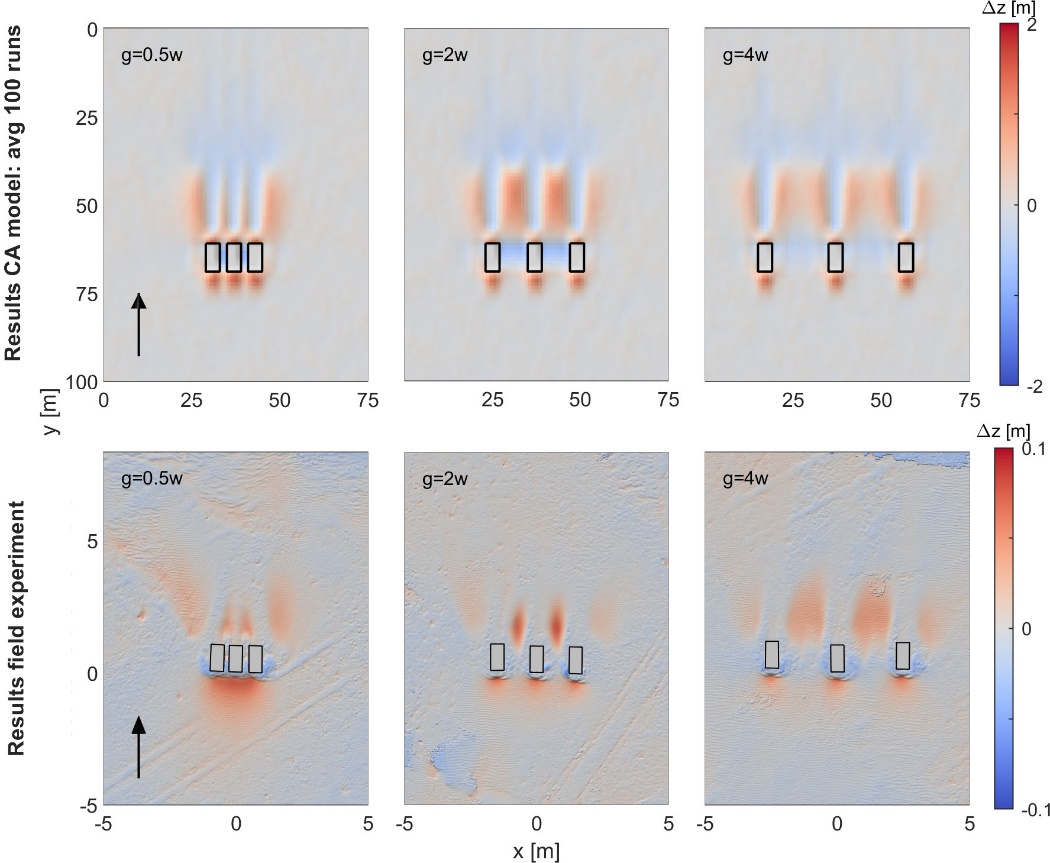D.W. Poppema1*, A.C.W. Baas2, S.J.M.H. Hulscher1 and K.M. Wijnberg1
1 University of Twente
2 King's College, London
*corresponding author:
Introduction
Buildings in sandy environments alter windblown sediment transport and morphology in their surroundings. So far, morphodynamic cellular automaton (CA) models like Dubeveg (Keijsers et al., 2016) have only been used to study natural dune dynamics. However, buildings introduce anthropogenic effects to these natural landscapes. We extend these CA models with building effects and use this to examine how building-induced morphological patterns interact with natural bedform dynamics.
Methods
CA models like Dubeveg are based on a grid with discrete slabs representing elevation. Probabilistic rules determine slab erosion and deposition, based on the presence features such as dunes or vegetation.
For the sediment transport dynamics around buildings, additional rules are needed. Therefore, we developed new rules that represent sideward sediment transport around buildings and the deceleration (deposition) and acceleration (scour) of sediment around buildings. Model results are then compared to field experiments. Next, longer-term simulations of up to 15 years are used to explore how morphological features around buildings interact with natural bedform dynamics.
Results
The simulated deposition and erosion patterns show good agreement with field experiments. They reproduce the shape and location of morphological patterns, for configurations with both single buildings and building groups (Figure 1). Model results further demonstrate that building-induced effects interact with local bedform dynamics and can alter the shape, growth and migration of sand dunes.

Figure 1: Comparison of bed level change: CA results (top row) vs field observations (bottom row)
References
Keijsers, J.G.S., De Groot, A.V., & Riksen, M.J.P.M. (2016). Modeling the biogeomorphic evolution of coastal dunes in response to climate change. JGR: Earth Surface, 121(6). doi:10.1002/2015jf003815
I. Surname1*, F.N. Another-Surname2 , Y. Next-Surname2
1 University Name, Country; 2 Organization Name, Country
* Corresponding author: mail.name@organization.org


